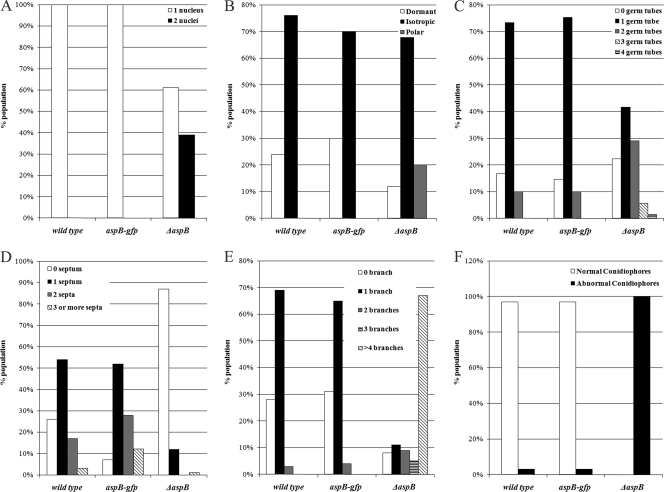Fig 1.
aspB is required for normal growth and morphology. (A) The ΔaspB mutant forms uninucleate and binucleate spores. Dormant spores from wt, aspB-gfp, and ΔaspB strains were stained with Hoechst 33342, and the numbers of nuclei were counted (n = 200). (B) The ΔaspB mutant breaks dormancy earlier than the wild-type strain. Spores were incubated for 4 h at 30°C and categorized as dormant (∼2.5 μm), isotropic (∼5 μm), and polar (presence of a germ tube) (n = 200). (C) The ΔaspB mutant forms multiple germ tubes. Spores were incubated for 6 h at 30°C, and the numbers of germ tubes were counted (n = 300). (D) The ΔaspB mutant delays septation. Spores were incubated for 11 h at 30°C, and the number of septa were counted (n = 200). (E) The ΔaspB mutant hyperbranches. Spores were incubated for 14 h at 30°C, and the numbers of branches per compartment delineated by two septa were counted (n = 200). (F) The ΔaspB mutant forms abnormal conidiophores. Spores were incubated in agar between coverslips for 2 days at 30°C. Conidiophores were categorized as normal if all layers were present and abnormal if layers were absent or aberrant (n = 200).

